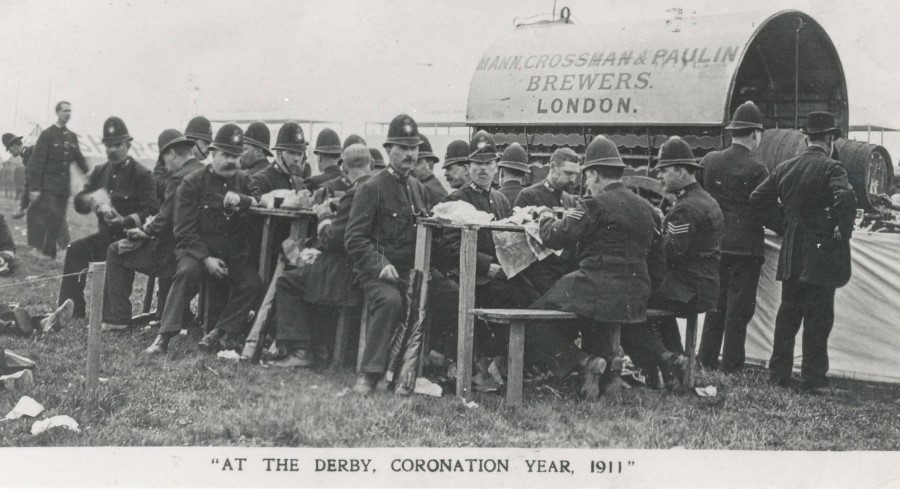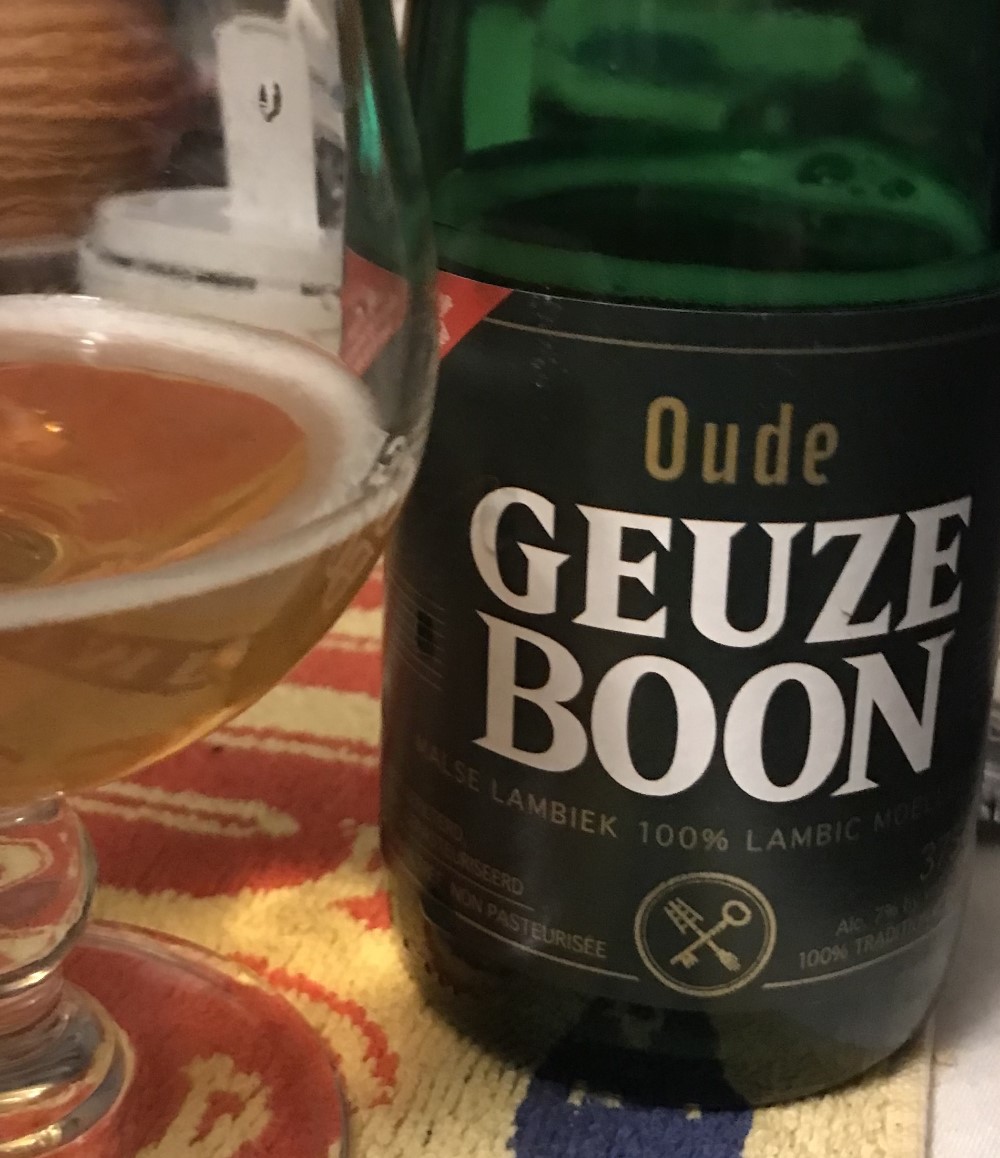I was thinking about these weekly things I write and whether there are themes are not. Mainly because I thought last week’s was pretty theme-y. Thematic perhaps. All about ones relationship with the ancillaries surrounding beer. Sorta. I tell myself that by writing these summaries I am tracing, following patterns. But I rarely go back and look. Behind the scenes, there are no graphs being added to every seven days. Then Jeff posted about an AI widget that Google has posted and I plunked a document I worked on years ago, trying to combine my research on English strong ales of the 1600s, the ones named after cities like Hull or Margate. Whammo. Summary and key points in about 3 seconds. Weird. Yet not uncompelling.
Back to the present, we have lost one of the great experimental US brewers with the passing of Ron Jeffries of Michigan and Hawaii:
A true embodiment of ohana, Ron was not only a loving family man but also a creative genius and lifelong learner. He dedicated his life to sharing his knowledge, serving as a mentor in the brewing industry. As a legacy brewer and the founder of Jolly Pumpkin Artisan Ales, his contributions to the craft are immeasurable. In his final year, Ron fulfilled the lifelong dream of moving to Hawaii where he eagerly worked on his family brewery. He was excited about what the future was bringing and what he would be bringing to the world with Hilo Brewing Company/ Holoholo Brewing. He cherished moments spent on his lanai, soaking in the Hilo rain with a pint in hand.
In 2007, I found myself at Jolly Pumpkin in Dexter and Ron Jefferies gave me a hour of his time at the end of a long day. That’s his barrel room from that visit up there. Frankly I don’t meet a lot of people I write about so I was it was a real treat. My favourite part of the talk was his curiosity in what exactly beer blogging was and might be. He also doubled over with a big laugh at my story about the December 2006 Hair of the Dog shipment with the incompetent capping and how the yeast saved the beer. I visited again a few years later and he was just as swell. Very sorry to hear that he passed.
On a cheerier topic and adding to the discussion about the need for the pint from last week, Liam wrote a very interesting bit about what he calls the “meejum”:
…how much beer was actually in a meejum? The simple answer seems to be a little less than a pint as per the comments from our annoyed Londoner above, but I have come across a couple of others mentions of the volume too. In a court case in Dundalk in 1904 the judge has the same question and was told it was ‘a glass and a half’ (426ml) and another mention in 1901 that says it was ‘two-thirds of a pint’ (379ml). A more recent comment from a letter to the Irish Independent in 2003 looking for the medium to be reinstated, it is said that it was ‘approximately 500ml’. With a pint being 568ml we can see some wildly fluctuating volumes here, but I think we are missing the original point of the medium, which was to give the consumer a drink based on price and not volume, so therefore it is very possible that a medium was a different size in different counties – and even different pubs. It was a portion of beer that equalled a value that was acceptable to the working man.
And we note the announcement of the coming retirement of Humphrey Smith, the controversial Chairman of Samuel Smith’s Brewery and perhaps good beer’s Epimetheus, taking particular guidance from Old Mudgie:
Despite all these problems, it has to be said that Sam’s pubs, when they are open, have a very distinctive appeal that is not matched by any of their competitors. They offer comfortable seating, traditional décor with plenty of dark wood, an absence of TV sport and piped music, and only admit children if dining, making their wet-led pubs adults-only. They are oases of calm. They may not offer the widest choice of beer, or the absolute best beer, but in many locations they are the most congenial pubs around.
A new source to me, Literary Hub published a passage or perhaps a chapter on the history of Pilsner drawn from Hopped Up: How Travel, Trade, and Taste Made Beer a Global Commodity by Jeffrey M. Pilcher published by Oxford Univ Press:
Few visitors in the early nineteenth century might have guessed that the market town of Pilsen, on the road from Prague to Bavaria, would become world renowned for its clear, sparkling beers. Having grown rich from the business of anthracite mining, residents imported Bavarian lagers. In 1840, the town fathers decided to invest some of their mining profits in the construction of a municipal brewery. The first tasting, held on St. Martin’s Day, November 11, 1842, brought their home-grown beverage local acclaim. But apart from the basic recipe of Saaz hops, Moravian malt, soft water, and lager yeast, little is known about how Pilsner acquired its legendary status. It was prized, at first, as an exotic “Bavarian” beer, and the malting process relied on British advances in indirect heating, like Sedlmayr’s Munich malt, but without the final burst of caramelization. The brewery’s capacity of just thirty-six hectoliters, about twenty barrels, meant that the beer was sold primarily in local markets.
My problem with these things is, of course, whether is it, you know, true – keeping in mind, of course, the degree of abstraction at play. It speaks nothing of Prof. Pilcher for me to point out that Pilsner’s history has been stated, restated and revised and refused and refined and (… you get my point…) so often in the last wee while that it gets one in a big of a fog. But there is a certain compelling style to the passage provided in LitHub that I would invite comment from those closer to the topic.
Speaking of style, I missed this post by B+B last week just at the deadline on spinning LP records in pubs and why it works for them:
The magic that people perceive in cask ale is similar to the magic they perceive in pub buildings which is similar to the magic they perceive in the sound of vinyl. A sense of connecting with something authentic. They’re also essentially nostalgic. Most pubs are embassies of the past. Victorian buildings with plastic Watneys clocks, Bass on the bar, and packets of pork scratchings whose packets haven’t been redesigned since 1981. It’s not unusual to find a pub with a stack of records in the corner or behind the bar. Albums that, if they were sold on Discogs, would not warrant a ‘Mint’ or ‘VG+’ rating. Split sleeves, yellowing inner sleeves, with a whiff of stale beer and cigarette smoke about them.
Writing on FB, Alistair brought my attention to a surprisingly startling and poignant video about the loss of working class neighbourhood and working class neighbourhood pubs as part of the modernization of in Salford, England in the 1960s. Here’s the video from the BBC from the time. It appears the modernization did not fully take. Then I thought… Salford… I know that place. Pellicle posted a podcast about Marble Brewing of Salford back in 2023. And Martin (with an “i”) has been there, too. The juxtaposition of each stage of Hanky Park over the sixty years is remarkable.
And, over on BlueSky, I came across an interesting thread on why hip-hop culture connects with Hennessey cognac and why Lebron is tying his brand to the drink:
During the war, African Americans stationed in France began consuming Hennessy. Afterwards, Hennessy, being French & having a different relationship with Black people than American companies, trail blazed by simply marketing to & employing Black people, carving out an extremely loyal consumer base. WWII saw Black soldiers abroad enduring antagonism from USA, like leaflets being dropped over France claiming they had tails in order to discourage sexual intermingling. Many were dismayed to find that their service in the effort of helping stop genocide abroad had not granted them humanity at home. During that time Hennessy was continuing to cater to African Americans & before we were sensationalizing terms like DEI, they had hired Black Olympian Herb Douglass as their VP of Urban Market Development, a role he served in for over 30 years. This history is why you hear about Hennessy in hip hop.
So it is not too far off the “I Am A Man” protests and declarations in the Civil Rights movement. Very interesting. Staying with history but reaching back further, last Sunday Martyn (with the “y”) disassembled the notion that the “Hymn to Ninkasi” is any sort of Sumerian beer brewing guide and did so with both verve and detail… like this:
Paulette has invented the word “šikarologist” to describe students of Mesopotamian beer, from the Akkadian word šikaru, meaning beer, the cuneiform for which looked like one of those pointy brewing jars laid on its side: 𒁉. I will definitely be stealing that. Strangely, a cognate of šikar in another Semitic language, Hebrew, the word shekhár, meaning “intoxicating drink”, is the root of the English word “cider”, via Greek, Latin and French. Shekhár is also the root of the Yiddish word for “drunk”: I remember my Jewish ex-father-in-law, who came from Vienna, staggering around at his 70th birthday party, surrounded by his extensive family in his large garden in rural Surrey, saying: “Ich bin so shicker!”
An interesting chit chat ensued in TwexLand led by Lars which touched on (i) the title is made up, (ii) it’s a hymn and maybe a drinking song but not a brewing guide (iii) why was the grain covered in dirt? (iv) woundn’t the malt get suffocated? and (v) why are the translations so different?
And Martin (still with the “i”) has been out and about in Filey on the North Sea coast seeking out GBG25 entries:
…the thing that hits you about Guide newbie the Station is the friendliness of the welcome, the Guvnor checking we know that food service has stopped before we waste 10 steps to the bar… I ask for mild and a Pride, and get mild and Blonde in Pride glasses. Four simple and unfussy rooms, a good mix of bench seating and squidgy chairs, we take a table with a reservation for “Bingo” in 3 hours time. “Bingo” was a popular boys name in the ’50s, along with Bunty and Bungo.
Top tip time. You want to make the weekly roundup? Include an accurate use of the word “squidgy” – can’t resist! Speaking of good words, Gary wrote an excellent post on the appearance of “suffigkeit” in mid-1900s US beer advertising:
You want Bavarian beer? Here it is, new and improved – tastier, clearer and more sparkle than your original – that’s suffigkeit, or it is now.
Speaking of clearer and more sparkle, Matt made something of a declaration, the return to voluntary non-paying scribbling:
Yes, I still write. For lots of publications in fact. Not as many as I would like, but a writer is never satisfied. What I crave is that unpolished, flow-state writing, the kind that feels like stretching a limb, or the freedom of trying something new that might be absolutely terrible but you’ve done it anyway and calmed that twitchy section of your brain. Writing like this, which I’ve written in 10 minutes, proofed once, and hit the publish button. I just have a need for a space, a scratchpad, to try a few things out once in a while. I want to write basically, so that’s all I’m going to do. No newsletter, no subscription, just a place to take things out of my head and put them on a page.
Very good. Excellent even. Unfettered scribbling is the best. Compare that to the advice own newletter writing beer marketeer offered this week:
Content that takes you wide has to be relevant to millions of people. It can’t be about the impact of thiolized yeasts on lagers. Wide aiming posts tend to be less about you and your brand, and more about the industry, interest, or setting you’re a part of. They can still find parallels to your brand, voice, ethos, or sense of humor. The point of these posts are to appeal to what most people come to social media for these days whether that’s to shut off their brain, have a laugh, or learn something new. Nobody opens Instagram hoping to be sold a new 4-pack of Hazy IPA, so that shouldn’t be the goal when trying to go wide.
Please don’t go wide. Wide is a euphemism for dull, undifferentiating and disposable. It pandering to other goals outside of what’s written. Jeff (for the double) went very narrow and shared something quite personal which lead me to cheer “Yay, Poop Tests!“:
The rest of the trip went fine, but my body was experiencing a kind of systemic failure. I got back to the U.S. and the rash became permanent. I gave up beer and then coffee and eventually even food. In the past, fasting calmed the itchy nerve endings. Nothing helped until a friend recommended a gut naturopath. She gave me a stool sample and we discovered I had an overproduction of some kind of intestinal yeast. She gave me an antifungal and within days the rash left. Today I am back to my old self, happily eating and drinking whatever is placed before me.
Finally and keeping with the personal, Rachel Hendry‘s piece in Pellicle this week is a rich contemplation of loss through the lens of taste:
I want to know what her wine tastes like.
I can’t think about what is going to happen to her. Instead, I find myself obsessed with whether her perception of taste has changed. I think of whether memory can still come to her each evening when she pours herself a glass of wine. I want to ask someone this but it seems so silly in the grand scheme of things—can she still taste if she can’t remember? Can she feel flavour anymore? Is this why she drinks more now?
What if one day I no longer know what my wine tastes like?
I become selfish in these moments. Thoughts of her quickly turn into thoughts of myself. What if one day this happens to me, too?
Some tests, we all learn as we age, do not lead to a good outcome. Rachel has captured that moment with brave clarity.
That ended up unexpectely bookended. Not really themed. Maybe. Still, until next week, as we consider this shared mortal coil, for more beery news check out Boak and Bailey every Saturday and there is a promise that Stan may be back from his autumnal break starting this very Monday. Then listen to Lew’s podcast and get your emailed issue of Episodes of my Pub Life by David Jesudason on the odd Fridays. And Phil Mellows is at the BritishBeerBreaks. Once a month, Will Hawkes issues his London Beer City newsletter and do sign up for Katie’s wonderful newsletter, The Gulp, too. Ben’s Beer and Badword is thereback with the sweary Mary! And check out the Atlantic Canada Beer Blog‘s weekly roundup. There is new reading at The Glass which is going back to being a blog. Any more? Check out the Beer Ladies Podcast. That’s quite good. And the BOAS podcast for the bro-ly. And the long standing Beervana podcast …except they have now stood down. Plus We Are Beer People. The Boys Are From Märzen podcast appears suspended as does BeerEdge, too. But not Ontario’s own A Quick Beer. There is more from DaftAboutCraft‘s podcast, too. All About Beer has podcasts and there’s also The Perfect Pour. Plus follow the venerable Full Pint podcast. And the Craft Beer Channel on Youtube. The Moon Under Water is gone which is not surprising as the ask was $10 a month. Pete Brown’s one cost a fifth of that but only had the one post.
*Me, I’m all about the social medias. Facebook still in first (given especially as it is focused on my 300 closest friends and family) then we have BlueSky (189) rising up to maybe… probably… likely pass Mastodon (931) in value… then the seemingly doomed trashy Twex (4,454) hovering somewhere well above my largely ignored Instagram (151), crap Threads (52) with Substack Notes (1) really dragging up the rear.











 Long time pal of this here blog and fellow Scot abroad Alistair Reese of
Long time pal of this here blog and fellow Scot abroad Alistair Reese of 



